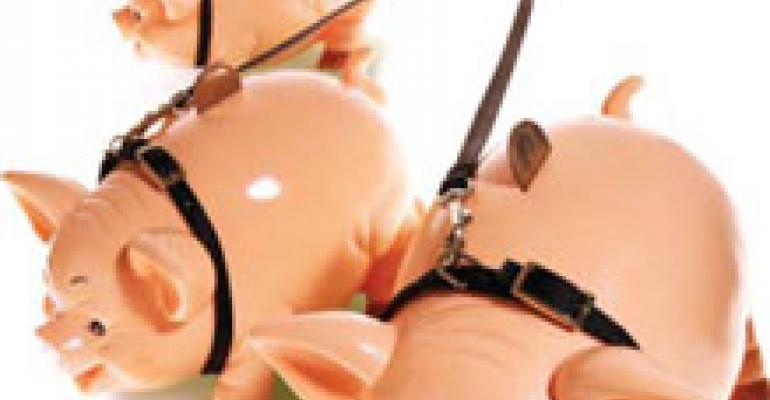Tricks of the Trade
By David Scott Peters

Early in my career, I was in a walk-in cooler with a friend and he asked, “What do you see on the shelves?” I started listing what I could see on the shelves, but was hushed by the friend, who told me the answer is money. This was a very important lesson— inventory is money!
You have to understand that inventory is money sitting on your shelves that you can’t pay your bills with. Worse yet, if you have too much inventory on your shelves, you risk employee theft because you have so much stuff sitting there you’d never know it was missing. Or it may simply spoil.
So how much is too much? The answer is in your turns. What is a turn?
Picture that your shelves are completely stocked with food. You open your doors for business and by the end of the day they are completely empty. A delivery arrives the next morning to fill your shelves again. This is a turn, the process of completely emptying your stocked shelves and restocking them.
Now you might be saying to yourself, “That works in theory, but I have items on my shelves that have been there for months, such as spices. And I have items that I replace almost daily, such as dairy and fresh vegetables. How do I know when I have turned my inventory when my shelves are never empty?”
The answer is easy. Now that you understand what a turn is, change the definition so that an inventory turn is the dollar value in product turns. Simply put, if you have $5,000 of food on your shelves, when $5,000 in product leaves your shelves, that’s considered a turn, no matter how many days it takes.
Inventory turns are calculated by dividing the dollar value of the product used (calculate this monthly to know what your food cost is) by your average inventory (taking your beginning inventory plus your ending inventory and dividing it by two). The final calculation for inventory turns looks like this: [use ÷ average inventory]. This number measures how efficient you are with cash and inventory.
For example, in most cases the kitchen of a full-service restaurant wants to achieve four to eight inventory turns a month. If the inventory is turned four times a month, that means (in theory) you’ll sell all of your product and restock your shelves four times. It also means you’ll place a food order only once a week.
When eight turns are achieved and you’re ordering twice a week, you only have enough food on your shelves for three to fours days of business. This makes your operation extremely efficient. The more turns you can achieve, the better you’re using your money. What are some other benefits to turning your inventory more often?
- You’ll reduce your risk of theft because you can immediately see when items are missing.
- You’ll operate a cleaner restaurant, which translates into better health department scores.
- With less inventory on the shelves, you will have more cash in the bank to pay bills.
- Calculating inventory turns correctly leads to ordering properly and hitting your budget.
So the next time you walk in to your cooler, ask yourself, “What do I see?” If the answer is just the right amount of money, you win.
David Scott Peters is a restaurant coach, trainer and speaker specializing in systems for independent restaurant owners. He is known as the SMART Systems guy who can walk into any restaurant and find $10,000 in undiscovered cash before he hits the back door. Reach him at [email protected], www.smilebutton.com, or (623) 266-9611.





